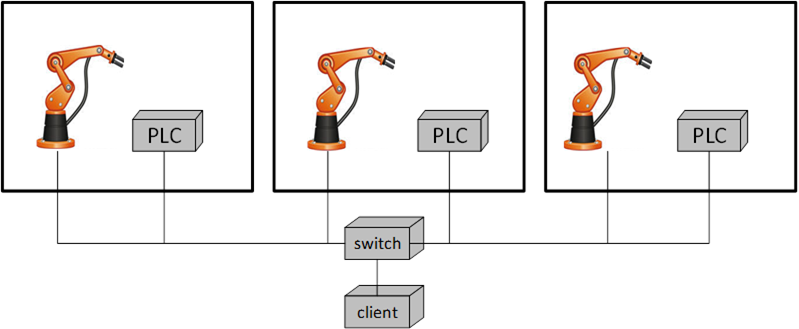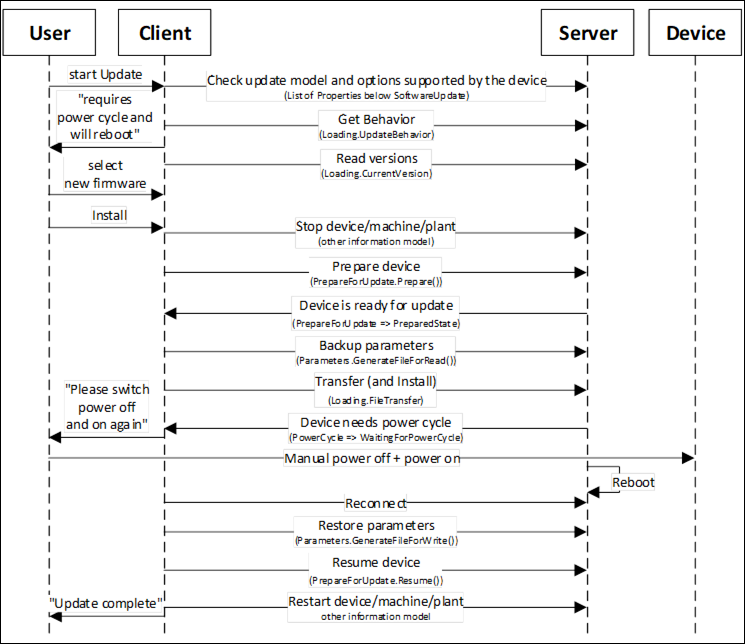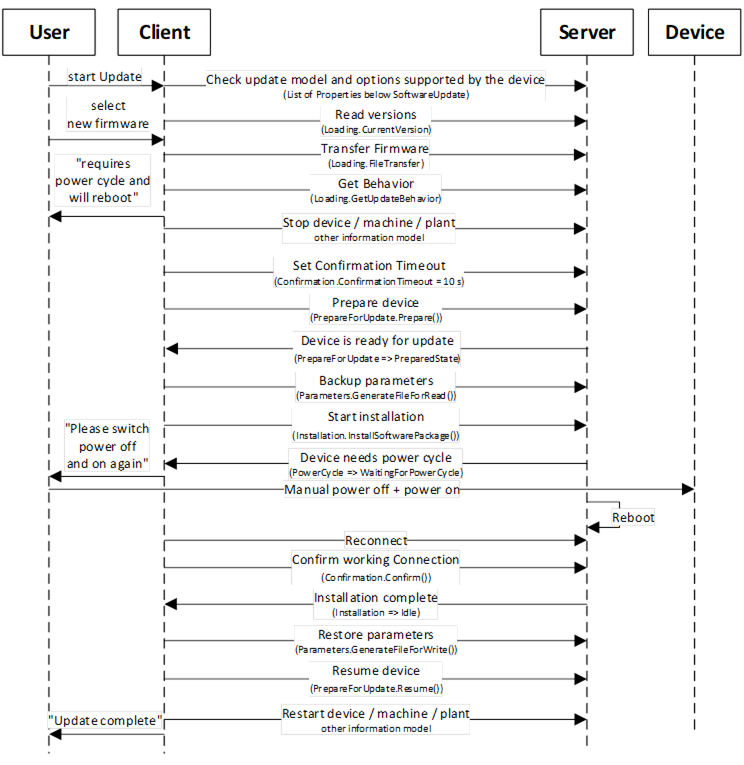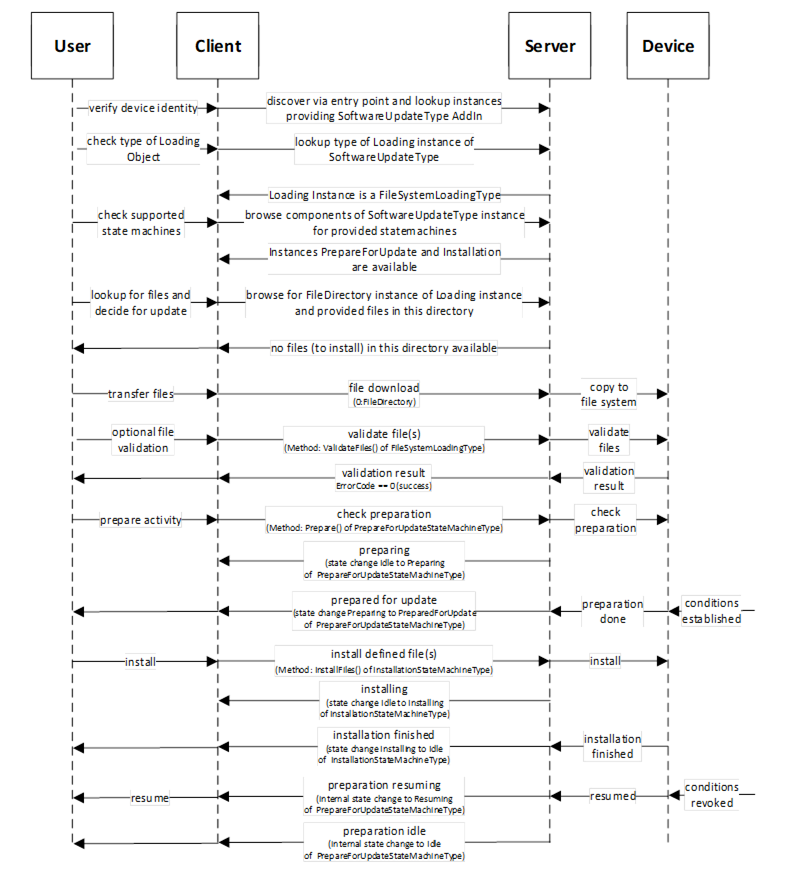This example illustrates the use of software update of several devices from the Client point of view.
This is only one example for a specific domain. There will be different Clients for different types of systems or industries (e.g., for process domain the process will not be stopped and before a sensor is updated a replacement value needs to be configured in the controller).

The example (illustrated in Figure B.4) describes a production line with several production cells. Each cell contains a robot and a main PLC that can be updated. A switch connects the cells and is also updateable via OPC UA.
A Client would perform the following steps:
- Analyze the system
An example sequence of Direct-Loading is shown in Figure B.5.
If the Server does not implement the properties PrepareForUpdate, PowerCycle or Parameters of the SoftwareUpdateType, the associated options are not supported by the component and Client-Server interaction becomes simpler.
In the first steps the device identity and the kind of supported Server options of the device must be discovered as described in Figure 34.
How to look up and transfer files for an installation is described in Figure 35.
The preparation can be done as described in Figure 36.
The installation itself is described in Figure 37.

Figure B.5 – Example sequence of Direct-Loading
An example sequence of Cached-Loading is shown in Figure B.6.
If the Server does not implement the properties PrepareForUpdate, PowerCycle or Parameters of the SoftwareUpdateType, the associated options are not supported by the component and Client-Server interaction becomes simpler.
In the first steps the device identity and the kind of supported Server options of the device must be discovered as described in Figure 34.
How to look up and transfer files for an installation is described in Figure 35.
The preparation can be done as described in Figure 36.
The installation itself is described in Figure 38.

Figure B.6 – Example sequence of Cached-Loading
An example sequence of File System based Loading is shown in Figure B.7.
In this example the server provides the PrepareForUpdate state machine and a preparation for an installation can only be done locally at the device. So, the Resume activity described in Figure 38 cannot be commanded by a Client.
In the first steps the device identity and the kind of supported Server options of the device must be discovered as described in Figure 34.
How to look up and transfer files for an installation is described in Figure 35.
The preparation can be done as described in Figure 36.
The installation itself is described in Figure 38.

Figure B.7 – Example sequence of File System based Loading